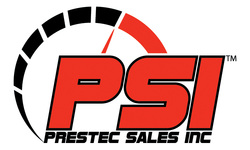Water Leakage From Pump Solutions from Cat Pump ®

Worn V-Packings or Lo-Pressure Seals Water leaking between the manifold and crankcase is a result of worn seals or packings. Low pressure is the first sign of worn seals. Doing maintenance at the early signs of low pressure readings will assure the seals and packings are replaced before they startleaking and eliminate possible damage to other parts of the pump. Worn seals and packings can also be caused by excessive temperature or liquids not suited to the material of these items. Make certain temperature is within specified pump limits. Use a Thermo Valve in the by-pass line when by-pass is returned to the pump inlet. Check the compatibility of the liquid with the standard seals and packings and change to alternate materials as needed.
Worn Sleeves or Cylinders In the piston pumps the sleeve and cylinder surfaces should be examined with each seal and cup replacement. If they have become scored or pitted, the seals or cups will wear quickly and could cause leaking. If the small o-rings on the piston rod are worn, they can permit liquid to travel along the plunger rod and result in a scored rod. Increase the frequency of servicing.
Worn Adapter In the split manifold pump models, there are adapters between the inlet and discharge manifolds. Examine the o-rings on these adapters when servicing the seals or valves and replace as needed. Exercise caution when assembling. Lubricate external o-rings to avoid cutting or pinching when installed into the manifold chambers. These o-rings are included in the seal kits and valve kits.
Cracked or Chipped Plunger Thermal shock can crack a plunger. Abrasives or harsh chemicals can scratch the surface. Excessively worn packings permitting the male adapter to ride on the plunger can damage the plunger. Examine the plunger carefully when installing seals and replace as needed. Increase the frequency of servicing.
Eroded Manifold External water leaks are generally caused by erosion within the pump and poor sealing by the seals and orings. Erosion can occur as a result of the liquid not being compatible with the pump liquid-end materials. Hard water, high pH liquids, acids or other harsh liquids can cause erosion. Continued operation with excessively worn seals and o-rings will result in erosion. Review your maintenance schedule and initiate a more frequent service cycle, so seals and orings are replaced before the pump begins leaking. Erosion can be minimized with a fresh water flush prior to dormant cycles. Flushing will help eliminate contaminants sitting in the pump for prolonged periods and can add to the life of the pump. Review the Chemical Compatibility chart to determine if your pumped liquid is compatible with the liquid-end construction of your pump and upgrade to SS or Duplex SS as needed.
Cracked or Warped Manifold Excessive pressure from a failed, improperly sized or missing relief valve will result in severe damage to the pump. Sometimes this excessive pressure will crack or warp the manifold. In other situations the excessive pressure will be transferred to the drive-end of the pump.
Both a primary and a secondary pressure relief valve are recommended in a high pressure system. Leaving liquid in the pump in freezing conditions can also result in a damaged manifold. Flush the pump with a 50% antifreeze/ 50% water solution before storing. If conditions are extreme, a properly vented enclosure is recommended.
Worn Sleeves or Cylinders In the piston pumps the sleeve and cylinder surfaces should be examined with each seal and cup replacement. If they have become scored or pitted, the seals or cups will wear quickly and could cause leaking. If the small o-rings on the piston rod are worn, they can permit liquid to travel along the plunger rod and result in a scored rod. Increase the frequency of servicing.
Worn Adapter In the split manifold pump models, there are adapters between the inlet and discharge manifolds. Examine the o-rings on these adapters when servicing the seals or valves and replace as needed. Exercise caution when assembling. Lubricate external o-rings to avoid cutting or pinching when installed into the manifold chambers. These o-rings are included in the seal kits and valve kits.
Cracked or Chipped Plunger Thermal shock can crack a plunger. Abrasives or harsh chemicals can scratch the surface. Excessively worn packings permitting the male adapter to ride on the plunger can damage the plunger. Examine the plunger carefully when installing seals and replace as needed. Increase the frequency of servicing.
Eroded Manifold External water leaks are generally caused by erosion within the pump and poor sealing by the seals and orings. Erosion can occur as a result of the liquid not being compatible with the pump liquid-end materials. Hard water, high pH liquids, acids or other harsh liquids can cause erosion. Continued operation with excessively worn seals and o-rings will result in erosion. Review your maintenance schedule and initiate a more frequent service cycle, so seals and orings are replaced before the pump begins leaking. Erosion can be minimized with a fresh water flush prior to dormant cycles. Flushing will help eliminate contaminants sitting in the pump for prolonged periods and can add to the life of the pump. Review the Chemical Compatibility chart to determine if your pumped liquid is compatible with the liquid-end construction of your pump and upgrade to SS or Duplex SS as needed.
Cracked or Warped Manifold Excessive pressure from a failed, improperly sized or missing relief valve will result in severe damage to the pump. Sometimes this excessive pressure will crack or warp the manifold. In other situations the excessive pressure will be transferred to the drive-end of the pump.
Both a primary and a secondary pressure relief valve are recommended in a high pressure system. Leaving liquid in the pump in freezing conditions can also result in a damaged manifold. Flush the pump with a 50% antifreeze/ 50% water solution before storing. If conditions are extreme, a properly vented enclosure is recommended.
